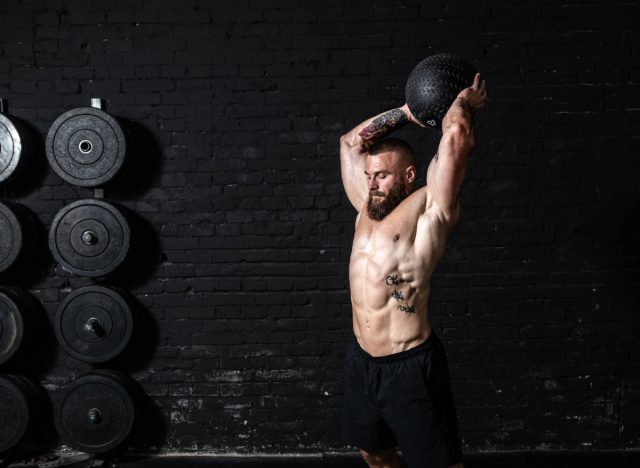Knowing the right number of sets and reps to incorporate into your workout routine is crucial in aligning with your fitness objectives. Through my coaching experience with a diverse range of athletes and clients, I have encountered individuals with specific goals such as increasing power, enhancing strength, building muscle mass, or boosting endurance. Crafting a workout program that suits these distinct goals necessitates a profound comprehension of how varying rep and set patterns can address different physiological adaptations.
Having immersed myself in the realm of sports as an athlete transitioning from Olympic weightlifting to mountain bike racing, I’ve had to adjust my training priorities. I have honed my training regimen to concentrate on enhancing power, strength, hypertrophy, and muscular endurance. Striking a balance among these elements has proven crucial in maintaining competitiveness in my chosen sport. Through time, I’ve grasped how the proper selection of sets and reps can significantly impact performance, whether in generating explosive power for steep climbs or sustaining endurance through lengthy races.
This article aims to elucidate how diverse sets and rep structures can assist you in accomplishing your fitness aspirations, whether directed towards power, strength, hypertrophy, or muscular endurance. Supported by both scholarly findings and practical insights, I will elucidate on customizing your workout routine to yield the desired outcomes, irrespective of your initial fitness level.
Power: Sets & Reps for Explosive Performance


If your goal is to improve power—your ability to generate force quickly—you’ll need a different approach than simply lifting heavy or aiming for high volume. Power is essential for athletes who need explosive strength in short bursts, such as sprinters, Olympic lifters, or anyone involved in high-intensity sports. When training for power, the goal is to lift a moderate to heavy weight with maximum speed and precision.
Recommended Sets & Reps for Power:
- Sets: 3-6 sets
- Reps: 1-5 reps
- Rest: 3-5 minutes between sets to allow for full recovery
Exercises like power cleans, snatches, med ball throws and slams, and plyometrics are great choices for power-focused training. You’ll want to lift heavy enough to engage your muscles fully but light enough to move the weight quickly. According to research, training in low-rep, high-velocity environments maximizes neuromuscular adaptations, improving explosive power.
Strength: Sets & Reps for Maximal Force Output


If your primary goal is to build strength, your focus should be on moving heavy weights with lower reps. Strength training involves lifting near-maximal loads to increase your body’s ability to exert force. This type of training is essential for athletes such as powerlifters or anyone looking to build foundational strength.
Recommended Sets & Reps for Strength:
- Sets: 3-5 sets
- Reps: 3-6 reps
- Rest: 2-5 minutes between sets for recovery
Strength training typically incorporates compound lifts like the squat, deadlift, and bench press. The key here is heavy resistance and fewer repetitions, which help develop the muscle fibers responsible for maximal force. Over time, this type of training leads to more significant strength gains, especially when combined with progressive overload.
Hypertrophy: Sets & Reps for Muscle Growth


If your goal is to build muscle size (hypertrophy), you’ll want to focus on a higher volume of sets and reps. Hypertrophy training emphasizes working muscles to near failure to create the conditions necessary for muscle growth. This type of training is ideal for bodybuilders or those simply looking to increase their muscle mass for aesthetics or functional strength.
Recommended Sets & Reps for Hypertrophy:
- Sets: 3-6 sets
- Reps: 6-12 reps
- Rest: 60-90 seconds between sets
The sweet spot for hypertrophy is moderate reps with shorter rest periods. Exercises should focus on compound movements like squats and bench presses and isolation exercises like bicep curls and tricep extensions. According to research, training in this rep range recruits a mix of muscle fibers and maximizes the time under tension, which is key for hypertrophy.
Muscular Endurance: Sets & Reps for Stamina and Longevity


For those aiming to build muscular endurance—such as marathon runners, cyclists, or anyone engaged in endurance sports—the goal is to maintain performance over extended periods. Muscular endurance training requires higher repetitions with lighter weights to condition muscles to sustain activity for longer durations.
Recommended Sets & Reps for Muscular Endurance:
- Sets: 2-4 sets
- Reps: 12-20+ reps
- Rest: 30-60 seconds between sets
When training for endurance, exercises like bodyweight movements (pushups, lunges) or light resistance exercises work best. Endurance athletes should aim for longer sets with lighter loads to improve the muscles’ ability to perform sustained, repeated contractions without fatigue.
Final Thoughts: Tailor Your Sets & Reps to Your Goals


When structuring a workout program, it’s crucial to align your sets and reps with your specific fitness goals. Whether you’re training for explosive power, raw strength, muscle growth, or endurance, choosing the right volume and intensity will make all the difference.
Based on my experience as a coach and athlete, as well as the research behind effective training methods, the key to success is in the details. Don’t just go through the motions—understand why you’re training a certain way and how it will get you closer to your goal.
Frequently Asked Questions (FAQs)
How many sets and reps should I do for muscle gain?
For muscle gain (hypertrophy), it is generally recommended to do 3-5 sets of 8-12 repetitions per exercise. This range helps to stimulate muscle growth by placing enough tension on the muscles without causing too much fatigue.
What is the ideal sets and reps range for strength training?
For strength training, aim for 2-6 sets of 1-6 repetitions per exercise. This lower rep range allows you to lift heavier weights, which helps in building strength by focusing on the neuromuscular system and improving muscle efficiency.
How many sets and reps are best for endurance?
Endurance training typically involves higher repetitions to challenge the cardiovascular system and improve muscular endurance. Aim for 2-3 sets of 12-20 repetitions per exercise when training for endurance.






